We decided to install a stretch PVC ceiling, but do not want to overpay? Then the best ...
|
|
Available cost, excellent performance, variety of models and ... |
Installing the visor over the balcony provides protection for its owners from atmospheric ... |
How to paint wallpaper for painting: tips and recommendations
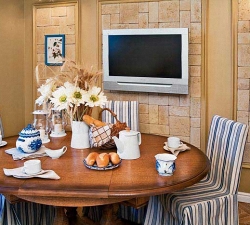
Concluding the repair, where wallpaper for painting is correctly pasted on a well -prepared surface, it is important to bring the walls and ceiling to perfection. The overall impression of the design of a dwelling or office space will depend on the correspondence of the variety of wallpaper and the method of application. But it is important not only to know what paint the wallpaper is painted for painting, but also to fulfill this stage in compliance with all the intricacies of the technology.
Table of contents:
- What is the difference between the base for painting from ordinary roller materials?
- How to calculate the flow consumption for wallpaper?
- How to choose the right paint and prepare for painting?
- How to choose a roller and other painting tools?
- Features of painting non -woven wallpaper
- Features of painting paper wallpapers
- Features of painting glass wallpaper
- Features of painting vinyl wallpapers
- Features of painting
- Final coating
- Tips for the correct painting of wallpaper
- Two sides of the coin
- Original ideas for painting wallpaper
What is the difference between the base for painting from ordinary roller materials?
The modern market offers a huge selection of finishing materials for external and interior decoration. The color and pattern of rolls has long been determined, since it can be varyed by adding any pigment to the coloring base. Wallpaper for painting is the easiest way to transform the interior, thanks to repeated repainting of the same surface.

Many are interested in how many times to paint the wallpaper for painting? It is difficult to give an answer, not seeing the pasted surface. The glass wallpaper is most durable without losing the texture to repaint up to 20 times. This is especially true for a large drawing and convex relief. Paper wallpaper for painting is not more than 4-5 stains, they are not designed at all for multiple color change. But the main difference between wallpaper for painting they are designed specifically for multiple staining of the surface.
Sometimes they try to paint dense vinyl wallpaper glued to the surface with the addition of PVA glue. However, this is a risky venture, even if it turns out well. Such experiments are possible only if you need to urgently paint some defects or children's drawings on the wallpaper. If it doesn’t work out well, you will have to remove the wallpaper and make full repairs. But there is no such risk if you immediately abandon ordinary wallpaper in favor of rolled materials for painting. Although their cost is higher than ordinary paper wallpaper, during the next repair you do not need to change the base.
Wallpaper for painting has a more noble appearance, but, given their durability, it is worth immediately deciding which texture more likes more for yourself:
- smooth;
- with a small pattern;
- with a large pattern;
- with a spectacular structure.
Tip: if you don’t know what wallpaper to choose for painting, how to glue and paint, you should not refuse them. Paper rolls will soon lose relevance, because they will be replaced by more practical for multiple staining.

The basis has different technical characteristics, it is classified depending on the material of the base and volumetric surface for staining the walls:
- fiberglass;
- non -woven;
- vinyl;
- thick paper with impregnation;
- lincrust (voluminous relief is applied with a special mixture based on wood flour, chalk and wax).
The roll base for painting will last at least 15 20 years, especially with careful care. It is advisable to make the first tone as bright as possible, since the wallpaper even after applying the coloring composition is slightly shining through. The wallpaper itself is bright colorless, white or translucent, but there is a color base. The shade of paint is better to choose a tone darker than the base.
Ordinary wallpaper is not recommended. If you are interested in whether it is possible to paint the wallpaper not for painting, then experts advise doing this carefully, only rolls with a protective coating. The advantage of the base for painting can be washed and repainted, which is especially important in the children's room and on surfaces that often get dirty. Not all paint is suitable for this, but only a special base for painting wallpaper. Hovezeline cannot be painted with heavy paint or on the basis of aggressive solvents will spoil the volumetric pattern.
Attention: wallpaper for painting can also be made multicolor, for this vinyl rolls are impregnated from the inside with one color, and after gluing the volumetric pattern is painted with a sponge. But with this way it is better not to experiment on the walls without preliminary experience.
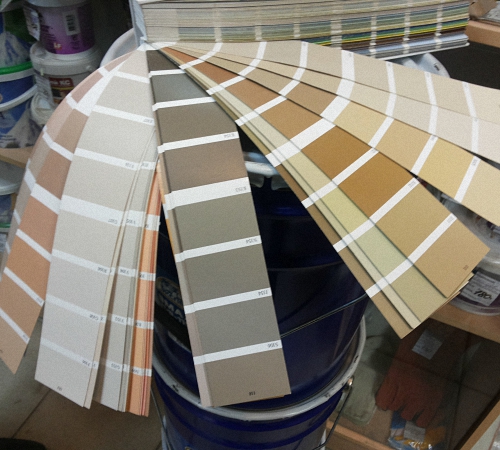
How to calculate the flow consumption for wallpaper?
In order for the color of wallpaper to do without fear that the paint may not be enough, the correct consumption, which is calculated based on:
- the total area of \u200b\u200bthe stained surface;
- paint consumption per 1 sq.m.;
- the ability to absorb paint.
The area of \u200b\u200bpainting is the sum of all the perimeters of the walls plus the ceiling, if it is supposed to be painted. The perimeter is the length multiplied by the width, the resulting value is the area of \u200b\u200bstained surfaces. But from these indicators they subtract the dimensions of window and doorways, before painting wallpaper for painting, add a little reserve for an unexplusted case of overspending, the paint is strongly absorbed, etc.
Paint consumption per 1 sq.m. indicated in the manufacturer's instructions or on the package. The same variety of paint will differ in different manufacturers in consistency (density), respectively, will be absent in different ways and spend. The standard consumption does not exceed 180 g/sq.m in 1 layer and up to 250 g/sq.m. In 2 layers. At the same time, each material absorbs paper in its own way and absorb it much larger than fiberglass or vinyl.
Look at the units of measurements, since 1 kg/sq.m is also indicated. and 1 ml/sq.m. The standard density of paint for wallpapers weighs about 1.5 kg, that is, a half is a heavier more than 1 liter of water. If the wallpaper has already been pasted, but the paint has not yet been purchased, it is not necessary to rush to rush to paint the wallpaper for painting for a while, nothing will happen to them. But painting is also an additional surface protection from pollution.

How to choose the right paint and prepare for painting?
When choosing and buying paints for wallpaper, different factors are taken into account, including the material of the base and functionality of the room.
Each type of base involves its type of paint:
- for paper rolls water -based;
- for painting non-woven water-dispersion;
- for fiberglass acrylic or latex;
- linkrust is liquid oil, acrylic and wax paste.
Main recommendations:
1. For washing surfaces (bathroom and kitchen), acrylic and latex paint is preferable. They form a film, breathe worse, but are not afraid of the effects of steam and sparing cleaning.
2. In open rooms and sunlight, latex paints are used, which do not fade under straight rays.
3. Each paint has its own reflector coefficient:
- matte;
- glossy;
- satin;
- semi -dummy.
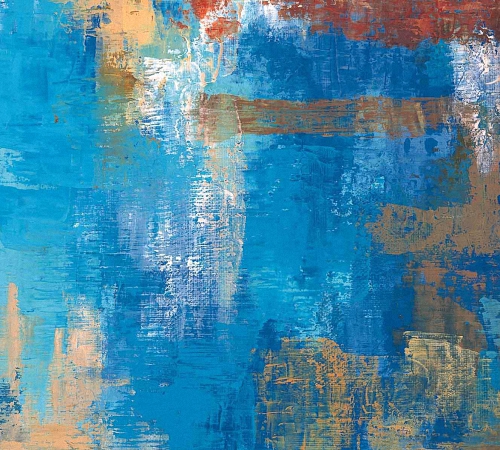
4. A satin paint with moderate brilliance is an excellent choice for the kitchen, bathroom or bathroom, it is most durable.
5. Matte paint hides well defects and walls, copes with excessive lighting.
6. glossy paint glitters and increases lighting with its lack. Sometimes a sponge moistened in this paint is stained with a relief on a matte background for a jacquard effect.
7. The easiest to apply paint is water -based, the most durable and universal in the use of acrylic. But any type of paint can not be used on wet wallpaper, they should dry for 2-3 days.

8. Before painting wallpaper for painting, it is worth trying on the control sample color intensity if the pigment (kner) is added too pale shade. The concentration of the pigment in each packaging should be the same, with the exception of a special coloring gradient.
9. First of all, they paint the ceiling, then open walls, then secondary, behind furniture. All pieces of furniture must be taken out, the floor should be closed with newspapers, and other open surfaces are covered with film and painting tape.
10. A bank with paint quickly dries, so it is not recommended to open it in order to look in advance. Immediately before applying, the packaging is opened, diluted, poured into a special ditch and painted with a masking roller.
11. Water emulsion paint has a white color, but the pigment of children of any shades, but in diluted form it looks lighter than after drying on the wall.
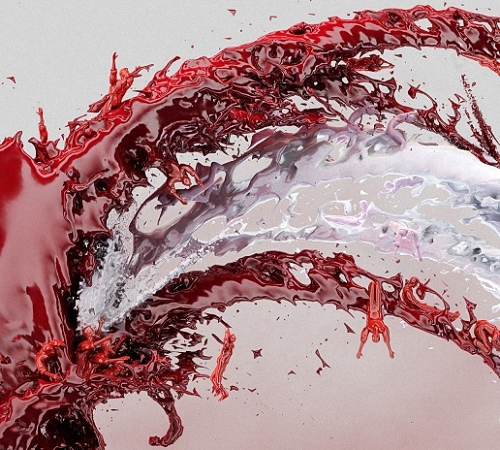
How to choose a roller and other painting tools?
The painting roller is the most convenient tool for painting, because even a beginner can domel in a cuvette with finished paint and roll a roller on the surface of the walls. But there are different types of tools, for example:
- with a long pile;
- velor roller;
- with a short pile.
- foam roller;
- fur roller.
Each of them gives its own effect when staining. It is not difficult to switch with a short pile with a nozzle with a short pile only a relief pattern, and a long deeply painted the entire texture. The foam surface gives unpainted bubbles if you slightly touch the walls without relief. Contacked nozzles on the roller are well rinsed and checked, and the pile that can remain on the surface does not climb.
Malar brushes are used in hard -to -reach places where it is impossible to get the perfect coloring of corners, cracks, gaps, places behind pipes and radiators with a roller.
The paint is poured into a special cuvette so that the roller is wetted evenly and without excess. But it is better to stir the paint in a separate container, such as a plastic bucket, and then add to the ditch. Be sure to observe the proportion in the ratio of water and dye, for example, 10% of the volume. Diluted paint is better absorbed by a roller and is even more applied.
Tip: If there are difficulties in choosing a tool, do not know what roller to paint the wallpaper for painting, check with the consultant in the building materials store.

Features of painting non -woven wallpaper
The wings of the roll painter (wallpaper) is an excellent base for painted ceilings and walls, so they do not cause difficulties with how to paint non -woven wallpaper for painting. The smooth lower side is glued to the walls, and the upper relief is painted. This base imitates more expensive surfaces, looks great on the wall and without staining.
If it is supposed to clean the painted wallpaper, experts recommend using only a paint with a latex -based protective composition. Wallpaper is best painted in 2 layers with a roller with a fur nozzle, and use a brush for complex places. It is not recommended to drive one place for a long time and impregnate the wallpaper to excess.

Features of painting paper wallpapers
Dense two -layer paper wallpaper with special impregnation is the cheapest base for painting, they look good on the ceiling. Due to the fact that the paper is afraid of water, the question arises of how to paint the wallpaper for painting correctly? Any specialized paint is suitable, but you should also not impregnate to an excess of one uniform standing enough.
The second layer is possible if the first is applied with divorces or bald spots. On paper wallpaper, it is extremely undesirable to leave the glue that could occur between the seams of the panels, this reduces the quality of work.
Features of painting glass wallpaper
The glass wallpaper is the most durable layer for painting, as it consists of a fiberglass based on quartz sand. Popular textures of the Christmas tree, path, spider web, etc. are suitable for repeated repainting, the most persistent base that hides all defects. The paint is not absorbed, but it dies deeply between the fibers of the wallpaper. The glass wallpaper is the same glass wool that is unpleasant for the skin, so it is necessary to work in protective clothes.
Fiberglass assume a primer before painting, but be sure to read the instructions. Acrylic or latex paint is an excellent choice for this basis. Usually applied to 2 layers, but the second is possible only after the first dries.
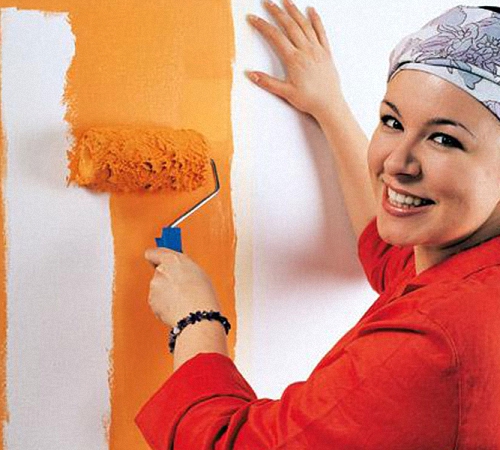
Features of painting vinyl wallpapers
Vinyl wallpaper on a paper or non -woven basis give a rich multilayer texture. The choice of paint is strictly in accordance with the instructions.
Before painting, a primer and acrylic paint for wallpaper, which are applied with a long -haired roller and a painting brush, are supposed. After slight drying, the second layer is immediately applied, including decorative for the embossed surface. Use the minimum amount of paint.
See how to paint wallpaper for painting a video at the end of the article.
Most often, when painting wallpaper, the following questions arise:
- How to paint the wallpaper for painting?
This factor depends on the type of wallpaper. So for paper wallpaper, water-dispersion paint is suitable for non-woven and vinyl water emulsion, for glass-mobility acrylic paint and latex colorful compositions.
- How to paint the wallpaper with water -based paint?
This is a difficult process. Previously, furniture and objects with a protective film should be protected in order to avoid pollution. In order not to damage the skin, you need to use gloves and closed clothes. Uneven walls need to be leveled with a primer or putty (in this case, the paint will need to be applied to three layers). It is necessary to carefully interfere with the paint. You need to start painting from the window, from the light source. It is easier to paint from the corners with a brush, then a roller. The stripes that are applied with a roller should be vertical, and the stripes applied should be overlap each other (applied vertically and horizontally). From the walls, the solution is washed off with clean water.

- Is it possible to stick wallpaper on a painted wall?
If we are talking about gluing wallpaper on a painted wall, then, first of all, we need to talk about risk. The consequence may be the removal of wallpaper, the appearance of bubbles and irregularities. But you can try. For the best effect, it is recommended to primed walls. You can stick any wallpaper on the painted surface except vinyl. You can also try to treat the painted surface with sandpaper so that the wallpaper is better glued.
- Is it possible to paint the wallpaper?
You can paint vinyl and non -woven wallpaper. It is not advisable to paint paper wallpaper.
- How to paint wallpaper on the ceiling?
If glass wallpaper is glued to the ceiling, then any paint is suitable, and only water -dispersion paint is suitable for wallpaper on a non -woven basis. It is also not recommended to paint the ceiling of residential premises with oil paint. Before painting the ceiling, it is necessary to de -energize the wiring in order to avoid short circuits and accidents. The absence of drafts should be ensured, the floors and protect the furniture. You need to use protective glasses, a headdress and working tools: a roller, brushes, a staircase, a tray for paint. The corners are painted with a brush, and the rest of the surface with a roller.
- How to paint the wallpaper for painting a second time?
Wallpaper for painting can be repainted more than 5 times (up to 15, depending on the manufacturer and the type of wallpaper). You can repaint in any color, regardless of the previous one. When repainting a darker color in light, you must first paint it with pure white paint, and then apply the required color.
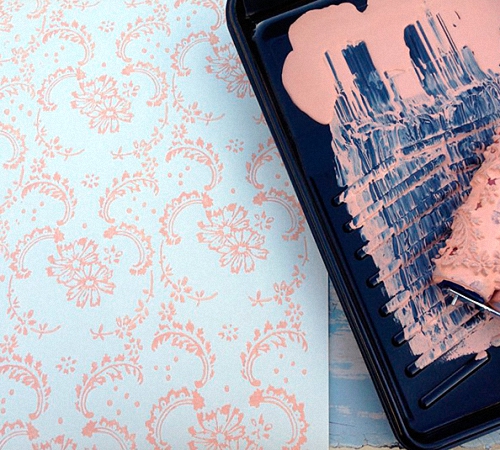
Features of painting
All types of wallpaper for painting require compliance with certain rules and knowledge of secrets for the best results. At the same time, the composition of the surface is first taken into account, since it is better to paint the glass wallpaper latex, and the non -woven base is better than water -based paint. You always need to make a sample: first on a separate piece of the canvas, then - on the site of the canvas, which will be closed with furniture.
It should be noted that the paint is diluted only to create the first primer layer (add 10% of the water from the total volume). However, this is not done for glass wallpaper, since it is better to paint glass wallpaper with two dense layers. At the same time, they withstand the interval for at least 12 hours. That is why they can be applied to them the maximum number of layers compared to other materials.
In total, any type of wallpaper for painting withstands 5-10 new layers. Then they can begin to lag behind the wall, and in order not to wait for this, they should be removed if you need to paint the surface again. Then the wallpaper is purchased again, and glued to the walls according to standard rules. They can be painted only after completely dry, which lasts about 12 hours.
Final coating
After the main coating dries, the time comes to embody creative impulses. You can apply patterns or drawings to the walls and ceiling. In addition, the surface can be covered with colorless varnish. This is especially true in children's and bathrooms, as well as in the kitchen. Such a coating is less subject to pollution. At the same time, it can be washed with an ordinary damp sponge.
The work algorithm is the same as when painting with paint. The choice between glossy and matte varnish depends only on personal preferences. However, it is worth considering that even matte varnish will add a light shine.
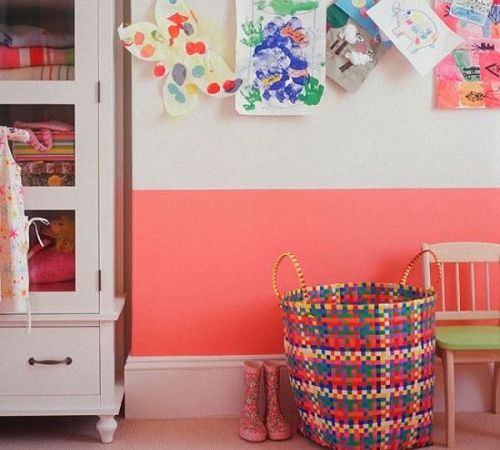
Tips for the correct painting of wallpaper
- Before starting work, remove all the oversized objects from the premises. Cover large furniture with a film or old sheets.
- The floor should also be closed with film or newspapers.
- Close the walls of the walls with a painting tape, which do not need to be painted (skirting boards, sockets, switches).
- Wet the roller with paint abundantly and evenly. However, she should not drip.
- The perfect color of wallpaper for painting is white or light shades.
- Use a spray gun for absolutely even painting.
- Wnerle wallpaper can be painted on both sides. The use of snow -white putty will emphasize the depth of color.
- Matte paint will help to hide the flaws of walls and traces of old wallpaper.
- It is strictly prohibited to paint the surface, which has not completely dried up after gluing wallpaper.
- The use of the brush and roller wear the base, reducing the number of possible repaints to 6-8 times. To achieve 10-fold repainting without loss of quality, you need to use a spray gun.
- Do not leave wallpaper without covering. The paint provides them with resistance to damage and durability.

Two sides of the coin
Although this method of updating the interior has earned a lot of compliments, any medal has two sides. Before making a decision, it is worth weighing all the pros and cons.
Arguments for:
- Allow you to realize any idea. If the suitable color is not on sale, you can use the tinting service and create the right manually.
- The painted surface is easy to clean from contaminants using wet cleaning.
- The resulting defects (spots, children's drawings) are easy to eliminate with a brush. You do not have to cross a piece of wallpaper, or even a whole wall.
- It is easier to paint the wallpaper than to overlay. The non -woven wallpaper can be repainted up to 10 times.
- It’s easier to work with arches, angles and other non -standard forms.
Arguments against:
- For a quality result, you need to prepare the walls.
- The perfect effect will only be obtained with a competent choice of paint and tools.
- Most of the colors absorb dust.
- Paints protect against minor mechanical damage. But a serious blow will inflict visible damage to them.

Original ideas for painting wallpaper
The use of wallpaper for painting gives unlimited space for experiments. You can use one of the above techniques:
- By applying horizontal or vertical stripes on the walls, you can visually adjust the parameters of the room. To do this, draw the stripes with a conventional pencil and ruler, and then paste them with painting tape. Do not be afraid to intercede on it in the process! The boundaries of the stripes will still be even if they let them dry completely.
- Before gluing the wallpaper, the surface of the walls can be painted in a bright color. Then you will receive a noble muffled matte shade.
- Paint evenly embossed wallpaper, and then draw a soft rag along a low surface. She will remove the paint from the protruding parts, thus emphasizing the pattern.
- New ideas for painting wallpaper can be emphasized from photos of finished interiors.

where the sneakers spids
where the sneakers spids
The article is to itself
The article is contrary to itself. This is written to paint vinyl wallpapers for painting water-dispersed, then after a few paragraphs with an emulsion
what a crap was written by the author:
what a crap was written by the author: ‹The area of \u200b\u200bpainting is the sum of all the perimeters of the walls plus the ceiling, if it is supposed to be painted. The perimeter is the length multiplied by the width, the resulting value is the area of \u200b\u200bstained surfaces ››
In which universe the area
In which universe the area is the sum of the perimeters, and the perimeter is long*width?
All contradictions in the article
All the contradictions in the article are still preserved (see reviews from 2017-18) someone is responsible for this text?
Continuous deception! Who to believe?